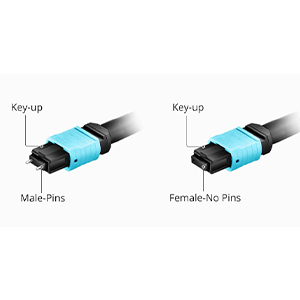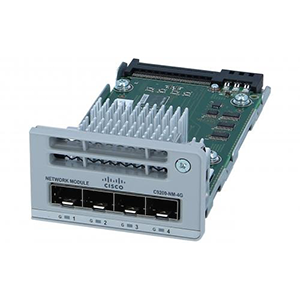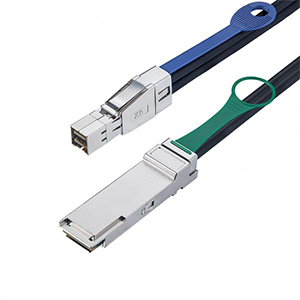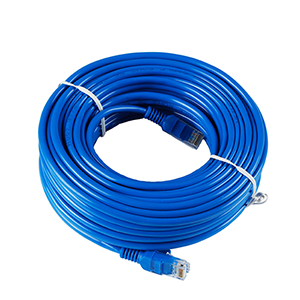Welcome to read this article. I will introduce you to the basic concepts, working principles and applications of Fiber APC (Angled Physical Contact) connectors in different fields. As a special type of optical fiber connector, Fiber APC connector has the characteristics of angular contact design and high reflection attenuation.
In this article, I will explain the definition and basic principles of Fiber APC connectors to help you understand how it achieves reliable optical signal transmission. At the same time, I will also explain the characteristics and uses of Fiber APC connector as a special type of optical fiber connector, so that you can understand its importance in the fields of optical communication and test and measurement.
Introduction to Fiber APC connector
Definition and rationale:
Fiber APC (Angled Physical Contact) connector is a special type of optical fiber connector that makes physical contact between optical fibers through a certain angle bevel (usually 8 degrees) when connecting. This bevel design causes the connector’s light to reflect, thereby reducing reflection loss and improving connection reliability.
The Fiber APC connector uses a bevel design to cause light to be reflected obliquely instead of directly reflecting back to the original fiber. This oblique reflection effectively reduces the reflection loss of the optical signal and guides the excess optical signal into the interior of the optical fiber, thereby reducing interference and loss caused by reflection.
Fiber optic connector type:
Fiber APC connector, as a special type of optical fiber connector, has the following characteristics and uses:
-
Low reflection loss: Fiber APC connector reduces reflection loss during the connection process through bevel reflection design. This makes it very useful in applications where reflection interference needs to be reduced, such as fiber optic communications, fiber optic sensing, and high-precision measurement. Low reflection loss also helps improve the performance and reliability of fiber optic systems.
-
High return loss: The bevel design of the Fiber APC connector can also provide higher return loss (Return Loss), which is the ability of the connector to absorb reflected light signals. High return loss means that the connector can effectively eliminate signal reflections caused by imperfect connections, thereby improving system performance and data transmission quality.
-
Special application fields: Fiber APC connectors are widely used in some special application fields. For example, fiber optic sensing systems and fiber optic measurement equipment often require high-precision and stable signal transmission, and the low reflection loss and high return loss characteristics of Fiber APC connectors make them an ideal choice.
It should be noted that Fiber APC connectors may be different in appearance and size from common fiber optic connectors (such as FC, SC, LC, etc.). Therefore, when selecting and using, attention should be paid to compatibility with other connector types, and the appropriate connector type should be selected according to actual needs.
Application areas of Fiber APC connector
Optical Communication:
Fiber APC connectors are widely used in the field of optical communications. The following are some of its application scenarios in optical communications:
-
Long-distance transmission: In optical communication systems, long-distance transmission usually requires low insertion loss and high reflection attenuation to ensure signal stability and transmission quality. The Fiber APC connector’s angled contact design and high reflection attenuation characteristics make it ideal for these applications.
-
Optical fiber network connection: Fiber APC connectors can be used to connect equipment, optical switches, optical amplifiers, etc. in optical fiber networks. They provide stable connections and low reflection loss to ensure network performance and reliability.
-
Fiber optic distributed sensing: In fiber optic distributed sensing systems, the low reflection loss and high return loss characteristics of Fiber APC connectors are very important to ensure the accuracy and stability of sensing signals.
Testing and measuring:
Fiber APC connectors are also widely used in test and measurement fields. Here are some examples:
-
Fiber optic testing instruments: Fiber APC connectors are widely used in fiber optic testing instruments, such as optical power meters, spectrometers and OTDR (optical time domain reflectometry), etc. These instruments require accurate and reliable optical signal transmission and require minimal reflection losses and interference.
-
Fiber optic measurement equipment: The application of Fiber APC connectors in fiber optic measurement equipment is very important. For example, fiber optic sensors and measurement systems require stable and precise optical signal transmission to obtain accurate measurement results. The low reflection loss and high return loss characteristics of Fiber APC connectors make them the connector of choice in these applications.
To sum up, Fiber APC connectors are widely used in the fields of optical communications and test and measurement. Its low insertion loss, high reflection attenuation and stable connection characteristics make it suitable for applications requiring high-quality optical signal transmission, including fiber optic networks, fiber optic sensing, fiber optic test instruments and measurement equipment, etc.
Features and advantages of Fiber APC connectors
Angular contact design:
Fiber APC connector adopts the angular contact design principle, that is, the optical fibers on the connector end face are in bevel contact. This design causes light to reflect obliquely inside the connector rather than directly back into the original fiber. The purpose of this is to reduce reflection losses and improve connection quality.
Through the angled contact design, Fiber APC connectors can achieve the following advantages:
-
Reduce reflection loss: Inclined reflection can effectively reduce reflection loss. Compared with the traditional flat contact design, the angular contact design of Fiber APC connector can significantly reduce the reflection loss of optical signals. This is important in applications where reflection interference needs to be reduced, improving the performance and reliability of fiber optic systems.
-
Provide better connection quality: The angular contact design makes the physical contact between connectors more stable and reliable. The bevel contact of the optical fiber can ensure a larger contact area, thereby improving the stability and reliability of the connection. This is very beneficial for fiber optic connections with long-term use and high frequency of plugging and unplugging.
Reflection attenuation:
An important feature of the Fiber APC connector is its reflection attenuation capability, which is the connector’s ability to absorb reflected light signals.
Fiber APC connectors have high reflection attenuation characteristics, typically reaching levels of -60dB or higher. This means that the connector can effectively suppress optical signal reflections caused by imperfect connections. Higher reflection attenuation is important for applications requiring minimal reflection, such as fiber optic communications, fiber optic sensing and measurement.
By reducing reflection attenuation, Fiber APC connectors can provide higher data transmission quality and system performance, reducing interference and losses due to reflections.
To sum up, the angular contact design and reflection attenuation characteristics of the Fiber APC connector give it lower reflection loss and better connection quality. This makes it excellent in applications that require reduced reflection interference and improved connection reliability, especially in areas where minimum reflection is required.
Installation and maintenance of Fiber APC connector
Connection steps:
The following are the general installation steps for Fiber APC connectors:
-
Fiber preparation: First, make sure the end face of the fiber is clean and smooth. Use appropriate tools, such as fiber strippers and fiber tweezers, to peel off the outer protective layer and buffer layer of the fiber and ensure that the exposed fiber end face is clean.
-
Fiber cleaning: Before connecting, be sure to clean the fiber end face to ensure a good connection. Use a suitable fiber cleaning tool, such as a fiber cleaning rod or fiber cleaning box, to gently wipe the fiber end face to remove dust, dirt, grease, etc.
-
Connector insertion: Gently insert the Fiber APC connector into the fiber optic connector socket, making sure that the bevel of the connector is correctly aligned with the socket. Gently push the connector in until it is fully inserted and makes solid physical contact.
-
Connection test: After completing the connection, use appropriate optical fiber test equipment, such as optical power meter or optical time domain reflectometer (OTDR), to test the connection to ensure that the quality and performance of the connection meet the requirements.
Maintenance precautions:
To maintain the performance and reliability of Fiber APC connectors, here are some maintenance considerations:
-
Regular cleaning: It is very important to clean the connector end face regularly. Use a fiber cleaning stick or fiber cleaning box and follow the instructions on the cleaning tool to gently wipe the connector end face to remove dust, dirt, grease, etc. Avoid touching the connector end face directly with your fingers to avoid leaving fingerprints or contamination.
-
End face protection: Protect the connector end face from damage and contamination. When the connector is not in use, use an appropriate protective cover or cap to protect the connector end faces from damage caused by dust, dirt, or scratches.
-
Avoid bending and pulling: Avoid applying excessive bending or pulling on the connector. Excessive bending and pulling force may cause the fiber to break or the connector to loosen, affecting the connection quality.
-
Regular inspection: Regularly check the appearance and connection status of the connector. Make sure the connector is not obviously damaged or loose, and take necessary repair or replacement measures in a timely manner.
By following correct connection procedures and regular connector maintenance, you can maintain the performance and reliability of Fiber APC connectors and ensure high-quality transmission of optical signals.
Fiber APC Connector Compatibility and Adapters
Compatibility points:
Fiber APC connectors have certain compatibility points in the fiber optic field. Here are some key takeaways:
-
Fiber type: Fiber APC connectors are generally compatible with single-mode fiber (SMF). This is because the design and angular contact characteristics of the Fiber APC connector are suitable for single-mode fiber operation.
-
Fiber optic specifications: Fiber APC connectors are usually compatible with standard single-mode fiber specifications, such as ITU-T G.652 and ITU-T G.657, etc. This means that fiber optics with Fiber APC connectors can be used within these specifications.
-
Connector compatibility: Fiber APC connectors are generally not compatible with other types of fiber optic connectors, such as FC (Ferrule Connector) or SC (Subscriber Connector) connectors. Due to different connector designs and contact angles, these connectors cannot be directly interconnected. To achieve compatibility between different connectors, adapters or adapters may be required.
Adapters and adapters:
In order to achieve conversion and connection between different interfaces, commonly used adapters and adapters can be used for Fiber APC connectors. Here are some common adapters and adapters:
-
FC-APC to SC-APC Adapter: This adapter allows fiber optics using FC-APC connectors to be connected to equipment using SC-APC connectors.
-
LC-APC to SC-APC Adapter: This adapter can be used to connect optical fiber using LC-APC connectors to equipment using SC-APC connectors.
-
FC-APC to LC-APC Adapter: This adapter allows fiber optics using FC-APC connectors to be connected to equipment using LC-APC connectors.
-
Other types of adapters and adapters: Depending on the specific connection needs, other types of adapters and adapters may also be available to meet the conversion between different connectors.
These adapters and adapters can help connect different interfaces and ensure compatibility and reliability of the connection. When selecting adapters and adapters, make sure they are compatible with the Fiber APC connector used and meet the required fiber specifications and connector type.
Application cases of Fiber APC connector
Optical fiber transmission:
Fiber APC connectors play an important role in optical fiber transmission, ensuring high-quality optical signal transmission. The following are some application cases using Fiber APC connectors in optical fiber transmission:
-
Long-distance transmission: Fiber APC connectors are often used in single-mode optical fiber transmission, especially in applications requiring long-distance transmission. Due to its bevel contact design, Fiber APC connector can reduce the reflection loss of optical signals, provide more stable and reliable signal transmission, and is suitable for long-distance communications requiring high-performance transmission.
-
Optical fiber network: Fiber APC connectors are widely used in the construction and maintenance of optical fiber networks. Whether in data centers, enterprise networks, or telecommunications networks, Fiber APC connectors provide reliable fiber optic connections to ensure high-speed, high-bandwidth data transmission.
-
Fiber optic sensing: Fiber APC connectors also play an important role in the field of fiber optic sensing. Optical fiber sensing technology uses optical fibers as sensing elements to measure environmental parameters such as temperature, pressure, and vibration by monitoring changes in optical signals. The stability and low reflection properties of Fiber APC connectors make them ideal for fiber optic sensing applications.
Fiber optic measurement:
Fiber APC connectors also have a wide range of applications in fiber optic measurements. The following are some application examples of using Fiber APC connectors in fiber optic measurements:
-
Optical power measurement: In optical fiber communication systems, it is often necessary to measure the power level of optical signals. Fiber APC connectors can be used to connect optical power meters to ensure accurate and stable power measurement results. Its low reflection characteristics reduce measurement errors and provide reliable power measurements.
-
Optical time domain reflectometry (OTDR): OTDR is a measurement technology commonly used for fault location and performance evaluation of optical fiber networks. Fiber APC connectors can be used to connect OTDR equipment to ensure low reflection and stability of the measurement signal, thereby providing accurate fiber length and loss information.
-
Fiber end face inspection: The bevel contact design of Fiber APC connector is crucial to the quality of the fiber end face. In fiber measurement, using Fiber APC connectors can achieve fast and accurate fiber end-face inspection to ensure the quality and reliability of the connection.
To sum up, Fiber APC connectors have a wide range of applications in both optical fiber transmission and optical fiber measurement. Its features include low reflection loss, stability and reliability, making it a key component for high-quality optical signal transmission and accurate measurements.
Summarize:
By reading this article, you will learn about the application cases of Fiber APC connectors in the fields of optical fiber transmission and optical fiber measurement. It not only ensures high-quality optical signal transmission, but also provides accurate and reliable test results, helping you achieve greater success in optical communications and test measurement.





